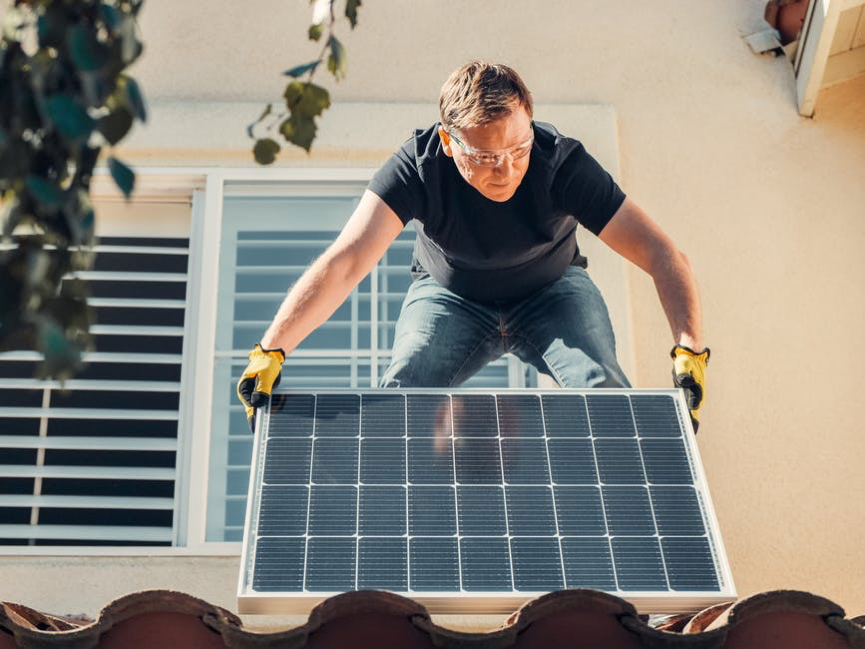Is there a possibility your home may be energy self-sufficient soon?
Solar energy shows no signs of slowing down and is an excellent way to power your home while decreasing your carbon footprint. After installation, you can forget about your system for years, and it will just keep pumping out energy.
That said, solar panel systems do require maintenance, something that many homeowners don’t consider when getting set up. If you’ve decided that a solar panel system is the right choice for you, but aren’t sure what the upkeep looks like, then you’ve got the right guide.
Today we’ll be walking through everything you need to know about solar panel maintenance so you can be confident in your system for years to come.
Create a Maintenance Checklist
Owning a solar panel system is a great way to save money on your energy bill and be energy-efficient. To maintain your solar panels and ensure peak performance, it is important to create a maintenance checklist for your solar panel system. The homeowner should check the roof or other mounting structure, properly maintain the wiring and electrical components of the system, regularly inspect the solar array and clean off any debris, inspect all fixtures, and monitor the impact of the system on their electricity bill and energy consumption.
Additionally, the homeowner should read through their warranty information carefully to see what is covered and what procedures and maintenance must be done to keep the system at optimal performance and in compliance with their warranty. With a proper maintenance checklist, your solar panels will be around for many more years to come.
Record Solar Power Generation
To begin, regularly inspect the solar array for any loose, broken, or cracked paneling and wiring, along with cleaning the paneling of any dirt, dust, or debris. Visit here for more information on how to clean a solar panel the right way. Also, check for any associated degradation on the panel surface and potential shading issues created by nearby objects.
To keep the most accurate records of the system’s performance, set up a measurement tool to record the solar power generated over time. Once the system is running at peak efficiency and generating the right amount of solar power, routine maintenance should be done periodically to ensure it is properly functioning and producing the desired amount of power.
Through simple and consistent maintenance, a homeowner can ensure their solar panel system remains in top condition while generating the most renewable energy possible.
Check Electric Solar Wiring Every 6 Months
One of the critical steps is to check the electric solar wiring every six months. This includes checking wires and connectors for any signs of damage or wear. If any components are worn or damaged, they should be replaced as soon as possible.
In addition, it is important to verify that the system is providing the proper output and ensuring any electronic components, such as the inverter and controller, are operating safely and efficiently.
If any parts need to be replaced, be sure to consult an electrician to ensure that the replacements are of the same quality and safe for use. Additionally, it is a good idea to check the panels for their physical condition which may interfere with their efficiency. Finally, if the system is connected directly to a home grid, always ensure that it is properly configured with the correct safety mechanisms and settings.
Inspect Your Solar Panels Monthly
Homeowners should make it a priority to inspect their solar panels on a monthly basis. This not only helps to make sure the solar panels are in good working condition but also allows the homeowner to detect any developing issues. Make sure to look for signs of damage, such as cracks, missing hardware, loose connections, and more.
It can also be beneficial to view the power output of each panel which will alert the homeowner to panel performance issues. Cleaning the panels periodically is also essential for keeping the panels in check and for optimizing the output of your system.
Tighten Bolts and Screws
Doing so ensures that there are no loose connections and helps prevent panels/parts from shaking during high winds. This will also enhance the performance of your system. In order to properly tighten bolts and screws, be sure to use the right size and type of tool. Begin by turning each screw ¼ turn at a time, then gradually turn each screw a few more times until it is sufficiently fastened.
Prior to beginning this process, it’s important to note the current state of the bolts and screws and make sure you don’t fasten them too tightly, as that can damage the panels. Finally, when done tightening, be sure to check the system’s integrity to make sure everything is in place.
Begin Your Solar Panel Maintenance With This Guide
A homeowner’s guide to solar panel maintenance proves how helpful and cost-effective it can be. To maximize the efficiency and savings of your solar panel system, regular maintenance is key. Make sure to schedule regular panel cleanings, and consider having a professional inspect your system every five years.
With proper and consistent upkeep and an understanding of how the system works, any homeowner can make sure their solar panels are in their best shape for maximum efficiency. Get started today and take advantage of the many benefits of solar energy!
For all of your home improvement and lifestyle interests, we welcome you to explore all that our site has to offer.
